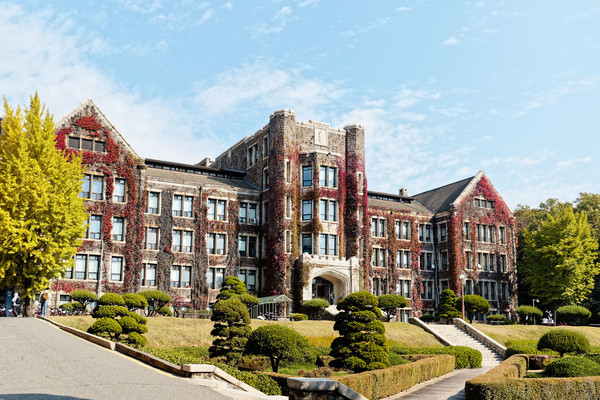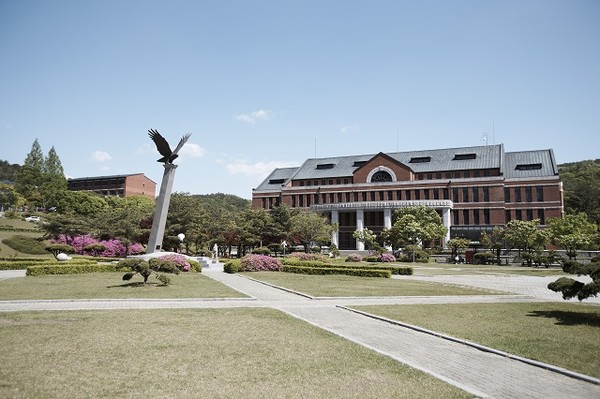The controversies of Yonsei’s main-branch campus system

THE CAMPUS that most people would associate with Yonsei University is located in Sinchon, Seoul and boasts a rich history of 137 years. Yonsei also operates another campus in Wonju, Gangwon-do officially called “Mirae Campus.” Despite being a branch campus, it offers a variety of departments and programs to its students. However, there exists a struggle regarding the negative perceptions of students from Mirae Campus.
Yonsei’s main-branch campus system
Yonsei University’s campus locations consist of Sinchon, Songdo, and Wonju. The Sinchon Campus is for undergraduate and graduate students affiliated with the main campus. Freshmen undergraduates are required to attend their classes at the International Campus in Songdo, Incheon. The International Campus is also where several main campus-affiliates, such as the College of Pharmacy and Underwood International College’s Humanities, Arts, and Social Sciences Division are based. On the other hand, all of the majors affiliated with Mirae Campus are based in Wonju. The Wonju branch of the College of Medicine was first established on Dec. 28, 1977. Then, Wonju Campus—which is now known as Mirae Campus—branched off from there to become its own institution in October 1978[1].
Despite sharing the name “Yonsei,” there are considerable differences between the two campuses. As of 2022, the Sinchon Campus has almost 30,000 enrolled students and over 1,500 are full-time faculty members. Sinchon Campus is made up of 19 colleges and 17 graduate schools—offering more than 5,000 courses. In comparison, Mirae Campus runs a significantly smaller operation with approximately 7,500 students and 400 full-time faculty members. Additionally, Mirae Campus consists of 6 colleges, 2 divisions, and 3 graduate schools which all together offer 1,500 courses. While Sinchon Campus is larger in administrative aspects, in terms of physical size, Yonsei’s Mirae Campus is much larger[1]. The two campuses mostly enjoy separate campus lives but there are a few exceptions where clubs or events are shared. For example, each campus operates separate general student councils and department councils. However, the Yonsei University Cheer Squad is made up of members from both campuses. University festivals, such as AKARAKA, are run separately, but for the Yonsei-Korea games, tickets are reserved for a small group of Yonsei Mirae Campus students to spectate alongside Sinchon Campus students.

The pitfalls of the main-branch campus system
The two campuses usually have little contact with one another, but Mirae Campus students are able to apply to change their affiliations from Mirae to the Sinchon Campus from their sophomore year. This system, however, stirs controversy amongst students as some believe it to be a “short-cut” to getting into the more highly ranked Sinchon Campus. Additionally, some students believe it is unfair that students who have changed their affiliation maintain their grades from Mirae Campus when calculating overall Grade Point Averages (GPA). This is because they believe that including grades from classes with supposedly less competitive standards is perceived to disproportionately inflate former Mirae Campus students’ overall GPA.
Past events have demonstrated that disagreements concerning the main-branch system have been ongoing for a long time. For instance, The Yonsei Annals covered a story in the fall semester of 2018 when Yonsei University’s former President Kim Yong-hak’s statements caused students to react heatedly. In an email sent to students of Mirae Campus on Sept. 27, 2018, President Kim described future plans on laying down the foundations for a long-term transition from the current main-branch system to “one university, multi campus.” This resulted in some students interpreting the ambiguous phrase as the intention to unify the two campuses, further instigating debates within the student body on the prospect of combining both campuses. Many criticized the former President’s remarks for the lack of communication with the students on such a consequential change. Students started an online petition against this plan and some even shouted out chants to protest during the former President’s opening speech at the Yonsei-Korea games. Later, through a meeting with representatives of the Emergency Exigency Committee, representatives of the university—including the former President—attempted to clear up the students’ misunderstandings. The university side explained that the phrase “one university, one campus” was not used with physical unification in mind. Rather, it was intended to communicate a vision to develop a more cooperative system between the two campuses whilst preserving each one’s autonomy[2].
The division between the two campuses is also visible on online school communities such as “Everytime”; posts that mention Mirae Campus tend to be critical as opposed to approving. Mirae Campus has also been given the nickname Won-sei, which is a fusion of Wonju and Yonsei. This is a way of differentiating it from Sinchon Campus to deny the fact that they are also a part of Yonsei University. Furthermore, Sinchon students tend to express disagreement with Mirae students "pretending" to be from the Sinchon campus. There are multiple posts criticizing the inclusion of Mirae Campus students in the Yonsei University Cheer Squad, especially when executive members of the squad are from Mirae Campus. Some students even question why Mirae Campus students are allowed to be in the cheer squad in the first place as they consider Mirae Campus to be a separate university[3].
Not a Yonsei-only issue
This issue is not exclusive to Yonsei University as Korea University also functions as a main-branch campus system. Korea University’s main campus is located in Anam-dong, Seoul while their branch campus is in Sejong-si. Similarly to Yonsei, Korea University has also come across complications stemming from the division between the Seoul and Sejong Campuses[4]. In 2021, Korea University was embroiled in controversy concerning the appointment of an executive member of its Emergency Central Steering Committee. When it was revealed that the student was actually affiliated with Sejong Campus and was only completing their interdisciplinary major in the Seoul Campus, a slew of objections from Korea University’s Seoul Campus students ensued. Disparaging posts directed towards the students of Sejong Campus were posted on online school communities such as “Koreapas” and Everytime. There were posts that accused the student in question of pretending to be from Korea University’s main campus and stealing the opportunity to be on the Emergency Central Steering Committee from a “true” student. Some anonymous community users even posted a photo of the appointed student’s face along with some of their personal information. Amidst these objections, there were also criticisms that such derogatory posts were hateful and fueled by academic elitism. Eventually, Korea University’s Emergency Central Steering Committee invalidated the Sejong Campus student’s appointment[5].
From a Mirae Campus student’s perspective
In an interview with the Annals, Kim Ju-hyun (Class of ’23, Dept. of Business Admin., Yonsei Univ. Mirae Campus) offered insight into his own experience as a graduate of Yonsei’s Mirae Campus. Kim explains how, personally, he chose Yonsei University’s Mirae Campus, despite being accepted into another university in South Korea, because it offered a good business program. Kim further commented that foreigners were generally indifferent towards the “brand value” of the Yonsei title. However, Kim did agree that, for a lot of domestic students at Mirae Campus who have lived their whole lives in Korea, the prestige that comes with going to a university with Yonsei’s name value, regardless of whether it is the main or branch campus, is a factor that plays in their decisions to attend. Additionally, many domestic students go to Mirae Campus because they intend to do an inter-campus double major or shift from Mirae to Sinchon Campus. Thus, they use Mirae Campus as a “launch pad” to eventually end up graduating at Yonsei University’s Sinchon Campus.
Regarding experiences of prejudice as a Mirae Campus student, Kim stated that a lot of people would ask him—often with a negative tone—why he went to Mirae Campus. Even professors at Mirae Campus, some of whom worked at both the Mirae and Sinchon Campuses, would question why he decided to study at Mirae Campus. Kim added that some professors simply found it strange that someone who knew how to speak three languages, including English, would choose to attend Mirae when he could have had the chance to be a student at Sinchon Campus. However, Kim explained that he simply wanted to receive a high-quality education and focus on his career. Therefore, he did not feel it was important which university he went but rather what he chose to do with his resources. Kim also wanted to emphasize the excellence of many of Mirae Campus’ programs, such as their scholarship and exchange programs.
From a Sinchon Campus student’s perspective
Ro Youn-je (Jr., School of Econ., Yonsei Univ. Sinchon Campus) explained in an interview with the Annals that Sinchon Campus students’ attitudes towards Mirae Campus students are generally negative. She believes that it is inevitable that some Sinchon Campus students tend to oppose the main-branch campus system. Not only are the campuses physically distant but there is no sense of solidarity and they do not feel like the same “Yonsei,” despite sharing the same title. Ro further commented that, for the students enrolled in Yonsei’s Sinchon Campus, their admission would have demanded ceaseless effort. Part of the reward for their endeavors would be the privilege to call themselves a member of the university. Additionally, when Sinchon Campus and Mirae Campus students’ College Scholastic Ability Test (CSAT), otherwise known as Su-neung, results are compared, there is a clear difference. For example, the predicted Su-neung ranking required to gain admission to the College of Nursing in Sinchon Campus is first rank whereas the predicted ranking for the Department of Nursing in Mirae Campus is second rank[6]. Ro states that this is not a subjective difference that varies depending on perception or values, but an indisputable one based on data. Therefore, Ro believes that the idea of “one university,” recognizing two different campuses as a single community, can be a sensitive topic for students and is thus reasonable for students to feel discomfort.
In regard to the posts uploaded onto online communities such as Everytime, Ro did agree that there are often negative opinions posted about Mirae Campus students. However, she considers the posts to be opinions rather than prejudice. Prejudice would indicate that the posts are biased or unfair, yet Ro believes that the statements about Mirae Campus students are not one-sided but simply a difference in views. However, Ro does not deem the opinions on Everytime to be representative of the opinions of all the students at Yonsei’s Sinchon Campus, due to it being an anonymous community.
* * *
Universities are, for many, a crucial and consequential part of one’s development. In a country like South Korea especially, where having a college degree is heavily regarded, students study tirelessly to achieve that honor. Nevertheless, it should not be the determinant of someone’s worth and students should feel proud of their universities, regardless of rank.
[1] Yonsei University
[2] Facebook
[3] Everytime
[4] Korea University
[5] Yonhap News Agency
[6] Nesin

